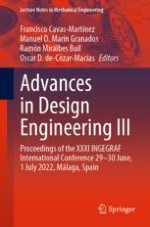This book contains the papers presented at the XXXI International Congress INGEGRAF “Graphic Expression: reunion, reflection, representation,” held on June 29–30 and July 1, 2021, in Málaga, Spain. It reports on cutting-edge topics in product design and manufacturing, such as industrial methods for integrated product and process design, innovative design and computer-aided design. Further topics covered include virtual simulation and reverse engineering, additive manufacturing, product manufacturing,engineering methods in medicine and education, representation techniques and nautical, engineering and construction, aeronautics and aerospace design and modeling. The book is divided into six main sections, reflecting the focus and primary themes of the conference. The contributions presented here provide researchers, engineers and experts in a range of industrial engineering subfields with extensive information to support their daily work; but also they are intended to stimulate new research directions, advanced applications of the methods discussed and future interdisciplinary collaborations.
